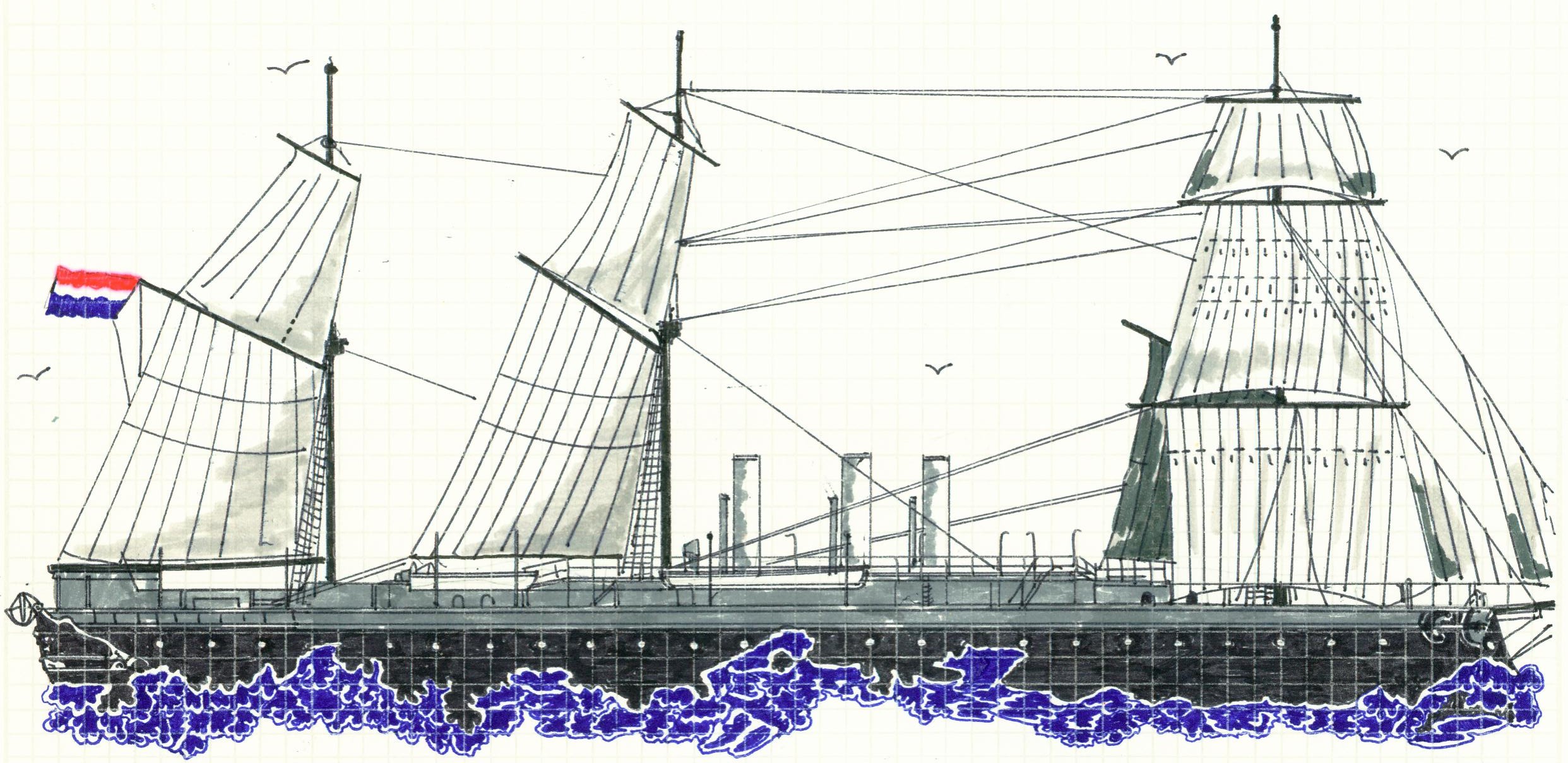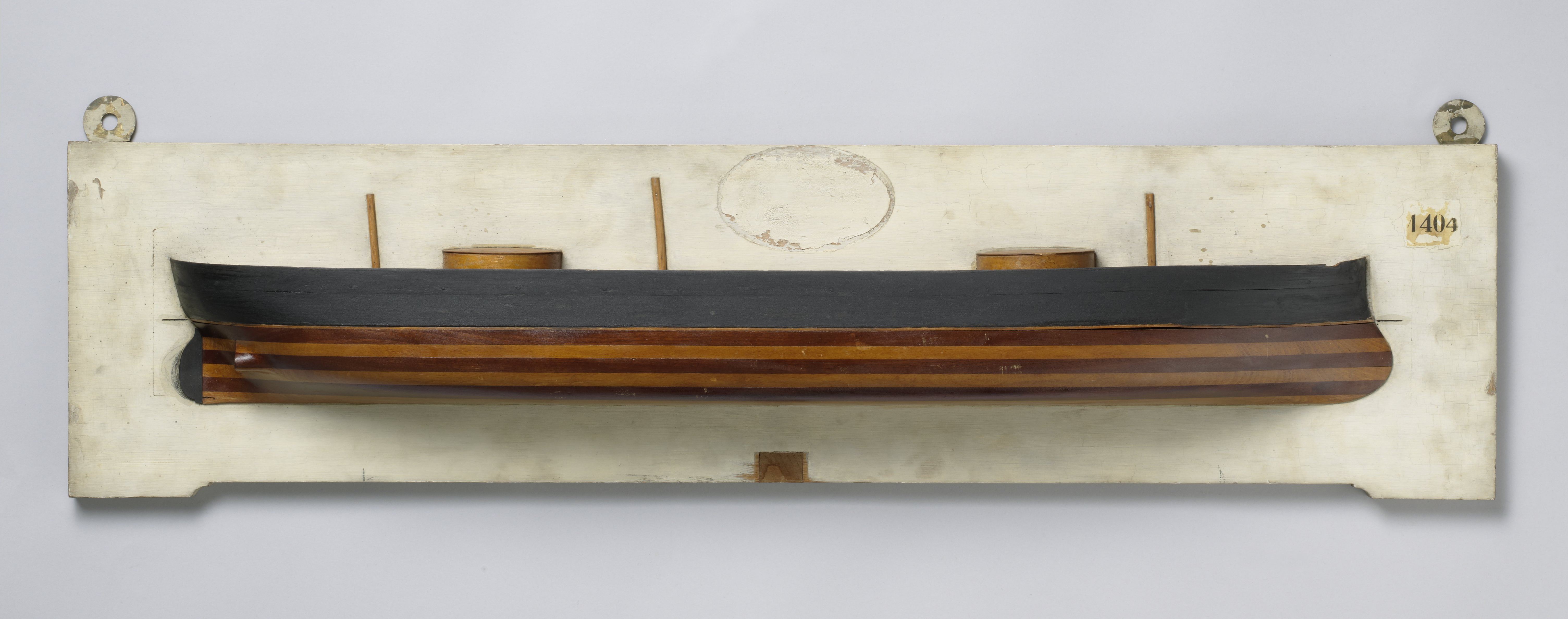Model Rijksmuseum Amsterdam, Netherlands. Original source
On 30th March she arrived at Suez, Egypt where was discovered that of both screws a blade was bended. Still the next day she departed arriving on 7 April in the Bay of Aden. There was coal and 10.000 litres fresh water bunkered while the 8 days earlier distilled water sill was to warm to be used as fresh water. She was forced to stay until the 11th at Aden before the boilers could be inside cleaned from oil and grease. The heat forced to wait for 3 days after the boilers were empty drained. Several officers of British and French of warships lying in the roads visited her and usually admired her strength. Several British officers were fond of her turret system and especially when them was told that even on the North Sea with a very wagging ship the 28cm guns still could be due to the hydraulic handling. A British senior officer of one of the two wood built warships in the roads even said “You will blow us out of the water in 10 minutes”.
Notes
1. This ram turret was designed by B.J. Tideman before the Noordzeekanaal was available, so it was a comprise between armour, artillery and horsepower. The result was a stern which was to 'full' and forced shaped. Ram turret, call sign GQMB, originally she was to be named Matador, on stocks at the naval yard at Amsterdam, Netherlands 28 November 1871, renamed Koning der Nederlanden on 24 February 1872 (other source claims even 24 April 1874), launched on 28 October 1874, commissioned on 16 February 1877 (other source claims 15 August 1876), transferred to the Indische Militaire Marine in 1894, decommissioned 1 April 1895, in August 1896 started the rebuilding at the naval yard at Surabaya, Dutch East Indies as a guard ship, commissioned on 1 December 1899, stricken in 1914 and became accommodation ship for the crew of the ships which were repaired and later for the submarine force, by Dutch navy personnel at Surabaya set on fire and sunk to prevent capture by the Japanese on 2 March 1942. Dimensions 81.78 (loadline between perpendiculars)-85.24 (over all) x 15.20 (over outside armour)x 5.83/8.93m, 5400 ton displacement , 2 engines with totally 7 boilers supplied 4630 ihp, 2 screws, speed 11,95 knots (on trial 26 July 1877), coal capacity 620 ton, armed with 4-28cm/11” guns , 4-12 cm/4.7” guns, 2-12cm/4.7” howitzers, 1-7cm/2.75” gun, 3-5cm/1.96” guns and 2-12cm/4.7” mortars. The sides were protected by 11,4/12,7cm (ends)-20,3cm/8” thick armour, turrets and turret bulwarks 22,9cm/9” and around the gun holes tot a maximum of 53,4cm/21” thick armour. The crew numbered 250 men. Fitted out with 3 masts. Trial off Texel 26 July 1877. Total costs while being prepared to depart for the first time to sea fl. 3.220,170,00.
2. Willem Enslie (30 June 1825 Brussels, Belgium-25 July 1898 Beek, Netherlands),
ending his career in the rank of rear admiral on 1 August 1886.


